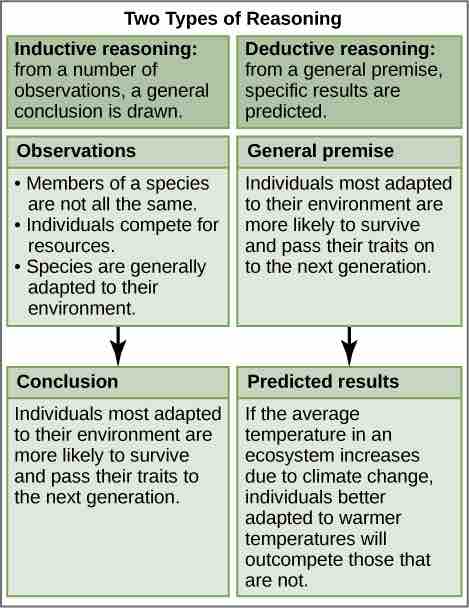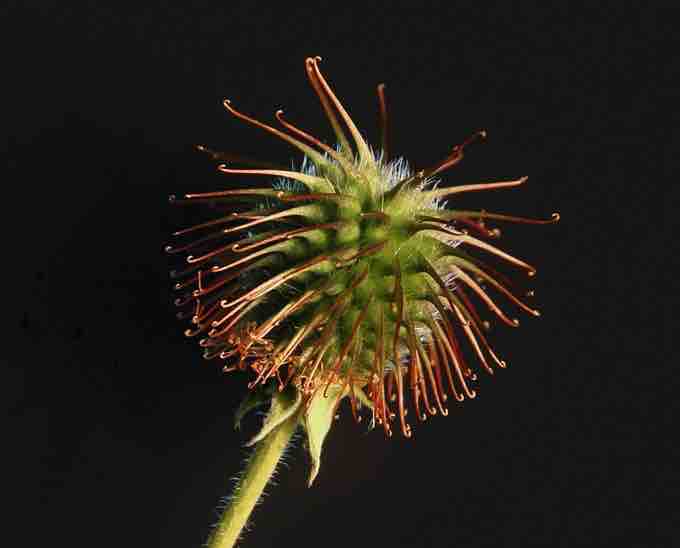The Process of Science
Science (from the Latin scientia, meaning "knowledge") can be defined as knowledge that covers general truths or the operation of general laws, especially when acquired and tested by the scientific method. The steps of the scientific method will be examined in detail later, but one of the most important aspects of this method is the testing of hypotheses (testable statements) by means of repeatable experiments. Although using the scientific method is inherent to science, it is inadequate in determining what science is. This is because it is relatively easy to apply the scientific method to disciplines such as physics and chemistry, but when it comes to disciplines like archaeology, paleoanthropology, psychology, and geology, the scientific method becomes less applicable as it becomes more difficult to repeat experiments.
These areas of study are still sciences, however. Consider archaeology: even though one cannot perform repeatable experiments, hypotheses may still be supported. For instance, an archaeologist can hypothesize that an ancient culture existed based on finding a piece of pottery. Further hypotheses could be made about various characteristics of this culture. These hypotheses may be found to be plausible (supported by data) and tentatively accepted, or may be falsified and rejected altogether (due to contradictions from data and other findings). A group of related hypotheses, that have not been disproven, may eventually lead to the development of a verified theory. A theory is a tested and confirmed explanation for observations or phenomena that is supported by a large body of evidence. Science may be better defined as fields of study that attempt to comprehend the nature of the universe.
Scientific Reasoning
One thing is common to all forms of science: an ultimate goal "to know." Curiosity and inquiry are the driving forces for the development of science. Scientists seek to understand the world and the way it operates. To do this, they use two methods of logical thinking: inductive reasoning and deductive reasoning.

Scientific Reasoning
Scientists use two types of reasoning, inductive and deductive, to advance scientific knowledge.
Inductive reasoning is a form of logical thinking that uses related observations to arrive at a general conclusion. This type of reasoning is common in descriptive science. A life scientist such as a biologist makes observations and records them. These data can be qualitative or quantitative and the raw data can be supplemented with drawings, pictures, photos, or videos. From many observations, the scientist can infer conclusions (inductions) based on evidence. Inductive reasoning involves formulating generalizations inferred from careful observation and the analysis of a large amount of data. Brain studies provide an example. In this type of research, many live brains are observed while people are doing a specific activity, such as viewing images of food. The part of the brain that "lights up" during this activity is then predicted to be the part controlling the response to the selected stimulus; in this case, images of food. The "lighting up" of the various areas of the brain is caused by excess absorption of radioactive sugar derivatives by active areas of the brain. The resultant increase in radioactivity is observed by a scanner. Then researchers can stimulate that part of the brain to see if similar responses result.
Deductive reasoning or deduction is the type of logic used in hypothesis-based science. In deductive reason, the pattern of thinking moves in the opposite direction as compared to inductive reasoning. Deductive reasoning is a form of logical thinking that uses a general principle or law to forecast specific results. From those general principles, a scientist can extrapolate and predict the specific results that would be valid as long as the general principles are valid. Studies in climate change can illustrate this type of reasoning. For example, scientists may predict that if the climate becomes warmer in a particular region, then the distribution of plants and animals should change. These predictions have been written and tested, and many such predicted changes have been observed, such as the modification of arable areas for agriculture correlated with changes in the average temperatures.
Both types of logical thinking are related to the two main pathways of scientific study: descriptive science and hypothesis-based science. Descriptive (or discovery) science, which is usually inductive, aims to observe, explore, and discover, while hypothesis-based science, which is usually deductive, begins with a specific question or problem and a potential answer or solution that can be tested. The boundary between these two forms of study is often blurred and most scientific endeavors combine both approaches. The fuzzy boundary becomes apparent when thinking about how easily observation can lead to specific questions. For example, a gentleman in the 1940s observed that the burr seeds that stuck to his clothes and his dog's fur had a tiny hook structure. Upon closer inspection, he discovered that the burrs' gripping device was more reliable than a zipper. He eventually developed a company and produced the hook-and-loop fastener popularly known today as Velcro. Descriptive science and hypothesis-based science are in continuous dialogue.

A Burr
This fruit attaches to animal fur via the hooks on its surface to improve distribution. Velcro is an example of a biomimetic invention which has copied burrs and uses small flexible hooks to reversibly attach to fluffy surfaces.